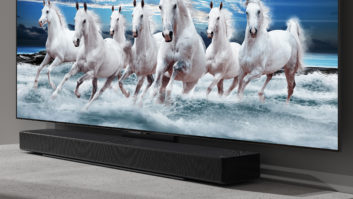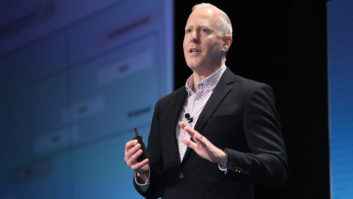Las Vegas is the perfect place for CES. Startups and global brands alike suit up and show the cards they’ve been clutching to their chests, hoping to win buzz that will invigorate sales, investments, and media attention for the rest of the year. The sensory and information overload is daunting: Masterpieces of innovation sit shoulder-to-shoulder with kitschy gadgets. All the announcements and technology can easily blur together like numbers on a roulette wheel — but if you approach the show with a strategy, it’s possible to win big.
After a modest 2021 show with 45,000 attendees, this year’s event burst past the six-figure mark. Over 115,000 consumer industry professionals gathered to see the latest innovations first-hand. I was among them, exploring the floor through the lens of the connected home. Based on this year’s CES, here are the top five trends I’d encourage integrators to keep their eyes on.
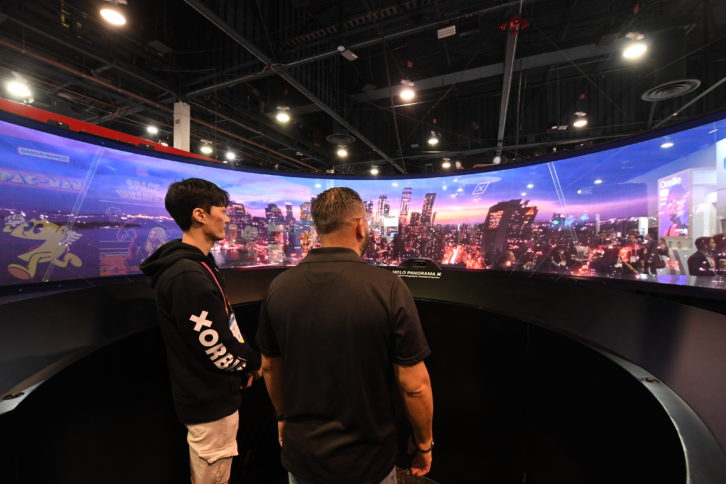
Exponential device proliferation
Every year, CES pries the “smart device” category open a little wider. In 2023, I was blown away by the sheer quantity and variety of connected products designed for the home. In addition to established categories like security, AV, wearables, and large appliances, there were connected small appliances like mixers and toasters; companion robots; plumbing fixtures; and more. Everyone is a technology company now, as demonstrated by Kohler’s stunning display demonstrating how smart systems can bring more efficiency, comfort, and safety to traditionally tech-light spaces. CEDIA has been watching this expansion of the smart home domain for some time — already, CEDIA members receive preferential trade pricing on Kohler products — but the current pace of growth is staggering.
For integrators, the key takeaway is that the web of connected devices in the home is getting rapidly more complex. Already, the average U.S. household has over 20 connected devices. That number is bound to explode as sensors get smaller, more rugged, and easier to integrate into any device. At this year’s CES, startup WePower debuted a line of energy-harvesting generators that can collect and supply power from motion, powering sensors in smart locks, lights, and other smart home devices. Samsung unveiled a remote that can harvest energy from radio waves, sucking power right out of the home Wi-Fi network. As smart devices shake off the need for batteries or external power supplies, product designers will be free to incorporate sensors into anything — even devices that are totally inaccessible after installation.
True home automation
The proliferation of sensors and smart devices has led to another trend that should be very exciting to the residential integration community: manufacturers delivering on the promise of true home automation. Most of what we call home automation still requires an initiating action from a human: a voice command or button press that sets off a cascade of macros. That’s often appropriate, as many people remain uncomfortable with the home making decisions for them. At this year’s CES, however, some truly hands-off use cases emerged.
My favorite example was Moen’s Smart Irrigation system display. Using a combination of smart sprinklers, wireless soil sensors, and control hardware, Moen can sense how much water a yard needs, differentiating by soil type and zone. Homeowners can deliver ideal irrigation to each area while conserving water by up to 30 percent compared to a standard system. This type of innovation goes beyond the “tech for tech’s sake” that CES is known for. It is a practical solution to a real problem that, once installed, has zero learning curve.
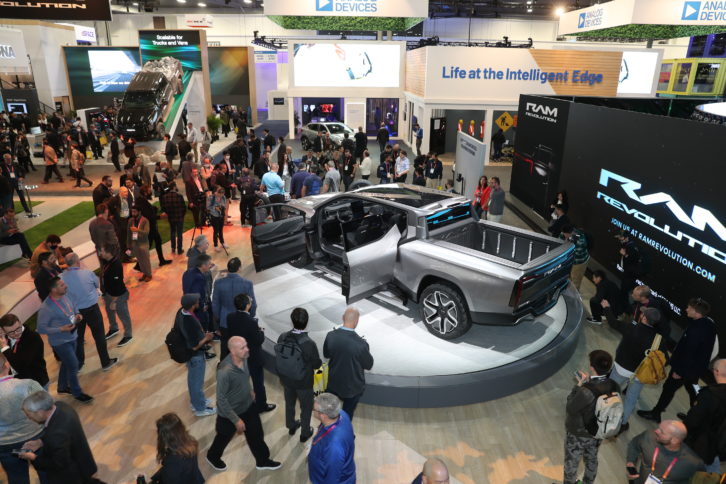
Discreet home monitoring
Do you have clients who want more peace of mind, but feel uncomfortable with the idea of in-home video surveillance? CES had several interesting solutions to that paradox. One approach that received a lot of attention: make the camera itself friendlier. The EnaBot EBO X is a soccer ball-sized robot with anime eyes, a cooing voice, a 4K camera, and an AI-powered digital brain. It can recognize family members versus strangers; detect if an elder has fallen or a baby is crying; and respond to cries for help. EBO can take family portraits, remind you to take your medication, or warn you if someone is entering an off-limits area of the house. While not precisely discreet, EBO is designed to make residents feel cared for rather than watched.
Companion robots may still strike some homeowners as a little HAL-9000 — particularly older generations who could benefit most from features like fall monitoring. That’s why I was especially drawn to the Nobi Smart Lamp, a fall detection and prevention system that looks like a lighting fixture. Nobi can detect if a resident has fallen, or even if they’ve remained in bed for an unusually long time. Privacy and personal autonomy are as integral to the device design as personal safety: all image processing takes place on the device rather than in the cloud. If a fall is detected, the device asks if the resident needs help first — and then, if they do, notifies a family member, emergency contact, or emergency service the resident has designated in advance. This is technology designed for living in place with dignity.
Got no strings: wireless displays
There was one trend I was relieved not to see back at CES: pixel wars. After years of competing to produce the biggest, most pixel-packed screens imaginable — well beyond of what’s practical in most homes or detectable by the human eye — display manufacturers seem to be focusing their innovation on other areas. CES saw significant strides in wireless displays.
The headline-grabbing Displace TV is the most bleeding-edge example of this trend. This 20-pound, battery-powered 55-inch 4K OLED display mounts to any flat surface via vacuum technology. It’s controlled with hand gestures and receives content from a base unit over Wi-Fi 6E. The company says that multiple units can be “snapped” together to form video walls, and the hot-swappable battery should last about a month at a usage rate of 6 hours per day. Be careful not to let those batteries run out, however, as they power the vacuum mechanism that keeps the device attached to the wall.
Displace may be a case of ambition outrunning sense, but it’s built on an LG OLED foundation with true potential. LG also showed its new M3 line at CES, with nearly wireless OLED displays (no hot-swappable batteries here) in sizes up to 97 inches. The Wi-Fi 6E base unit, the Zero Connect box, responds to voice commands and can be positioned up to 30 feet away. This is a harbinger of how Wi-Fi 6 is going to impact infrastructure requirements in the home.
Elephants in the Room: Power Management and Network Security
CES is always big on consumer products and DIY solutions, but the elephant in the room this year was the rising need for professional services. Network security is a clear and pressing need — every single connected device represents a potential entry point into the home network. With up to 80 percent of remote-capable jobs now done from home at least part-time, the data on the home network has grown incredibly valuable. Homeowners need robust, professional-grade networks with the security to match.
Power management is another massive area of opportunity for integrators. As people grow dependent on connected devices to protect the health and safety of their loved ones, they need the assurance of an always-on system, with proper power conditioning and backups. Case in point: CES is now the largest auto show in the world, with electric vehicles from manufacturers ranging from Ford to Sony. As EVs become part of the connected home ecosystem, existing power systems will be tested to their limits. The residential integration industry must stand ready to address this need.
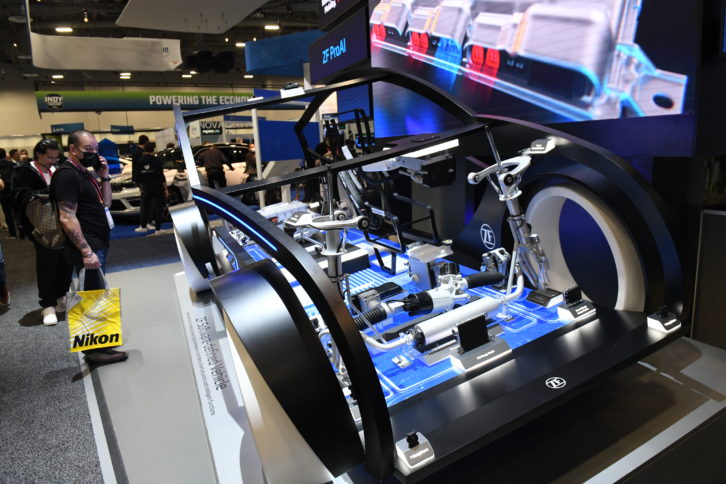
CES is a bursting marketplace of ideas — some trends still coalescing, some interesting devices that aren’t quite ready for prime time, and some well-developed systems that I’m sure have already sparked conversations between manufacturers and the many distributors I saw at the show. Now begins the filtering process, as the products displayed in Las Vegas begin to ship and undergo third-party testing. By the time of CEDIA Expo, I expect to see many of these trends represented by integration-ready products on the show floor. Get ready to expand into every room in the home, using a wider variety of systems and devices than ever before.



